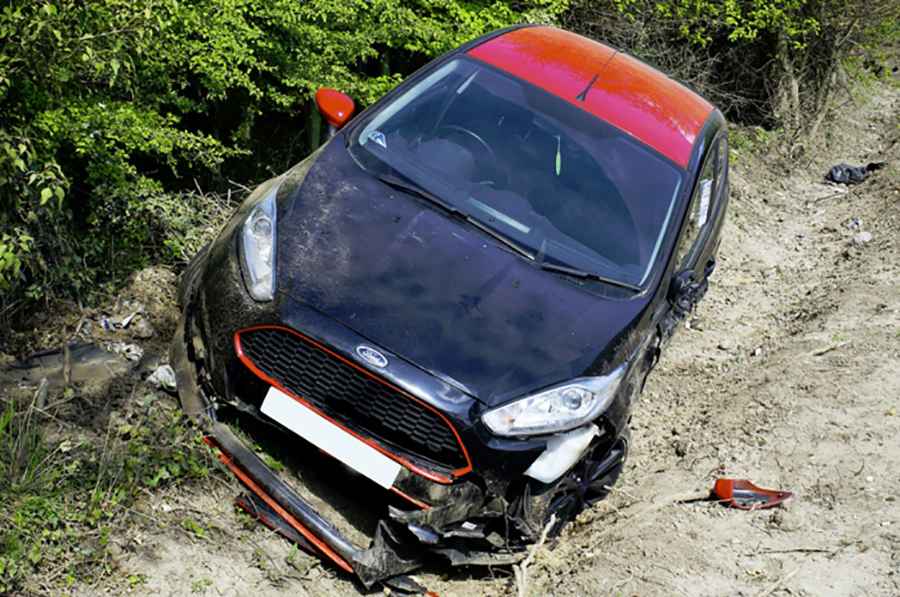From Scenic Drives to Courtrooms - Understanding Liability After an Accident On Dangerous Highways
Facing up to the aftermath of a highway accident is no less challenging than the treacherous bends of the road itself. One minute, you're admiring nature's grandeur; the next finds you in a whirlwind of flashing lights and paperwork. It's critical to discern who's at fault amidst this chaos, which can be as complex as the landscape you were just enjoying.

Expert legal guidance becomes your compass here — pinpointing responsibility and charting a path through formidable legal terrain. Understanding liability transforms from an abstract concept to an actionable strategy when compensation—and justice—are on the line.
Mapping the Terrain of Fault: Who Holds The Wheel?
The question of liability after a vehicular accident can be as multifaceted as a mountain road. It starts with understanding that fault is not always directly ahead; it may veer off into unexpected territories.
A driver's immediate assumption might be to look at the other wheelman, or blame factors like speed, but the responsibility could unfold in various directions. Natural factors, such as wildlife or weather conditions characteristic of scenic highways, do play their role, yet they seldom absolve human error or negligence.
Equally critical is considering the design and maintenance of these picturesque byways. Was there adequate signage warning of potential hazards? Were guardrails intact and roads properly serviced? At times, even government entities responsible for highway upkeep may find themselves in the legal crosshairs.
In this rough topography, precise evidence gathering becomes pivotal — witness testimonies, accident reports, and photographic documentation are key contours in mapping out liability. And remember: just like a car’s response to a driver's actions determines its path on a road, so too does an effective legal strategy shape outcomes in the courts.
Strategizing with Legal Pioneers: Your Route to Recovery
The moment you enlist an auto accident law firm, you're teaming up with navigators whose expertise lies in dissecting and understanding the topography of tort law. Their role is paramount in steering you through the labyrinth of statutes and case precedents that govern roadway mishaps. But it’s not just about legal prowess; an adept attorney brings a nuanced perspective to your unique situation, crafting a case as bespoke as the road that led you here.
These legal trailblazers operate much like forensic scientists, meticulously reconstructing the events to isolate where things went awry. This often involves engaging with accident reconstruction specialists who employ the precision of engineers to analyze skid marks, vehicle damage, and final resting positions.
The outcome is a factual narrative that clarifies how each party’s actions contributed to the event — a narrative that can make all the difference. Your chosen legal team should be battle-tested in negotiations, unflinching when facing insurance companies' tactics designed to devalue or dismiss legitimate claims.
Here's where their negotiation skills prove critical: these attorneys don't merely speak on your behalf; they wield evidence like expert chess players, anticipating opposition moves and countering with strategic finesse. Their aim? Achieving an equitable settlement without getting dragged into time-consuming litigation — unless it's absolutely necessary for fair compensation.
Crafting Your Testimony: The Art of Storytelling in Law
Your account of events is a cornerstone that can either fortify or weaken your case. Crafting this testimony demands more than mere recall of events; it requires an understanding of narrative impact.
A skilled attorney shapes your recollection into a compelling story, forged with the rigor of truth and the clarity needed to cut through a fog of legal complexity. Here lies the art within the mechanics of law—presenting your experience in a way that resonates with juries and judges alike, ensuring your voice, amidst the clamor for justice, is heard clearly and empathetically.
Final Thoughts
Navigating the aftermath of a highway accident demands a composed, strategic approach. With the right legal partner to guide you—transforming chaos into clarity—your journey from confusion to compensation can lead to a resolution as satisfying as the road once traveled with hope and admiration.
Image Source: Pexels